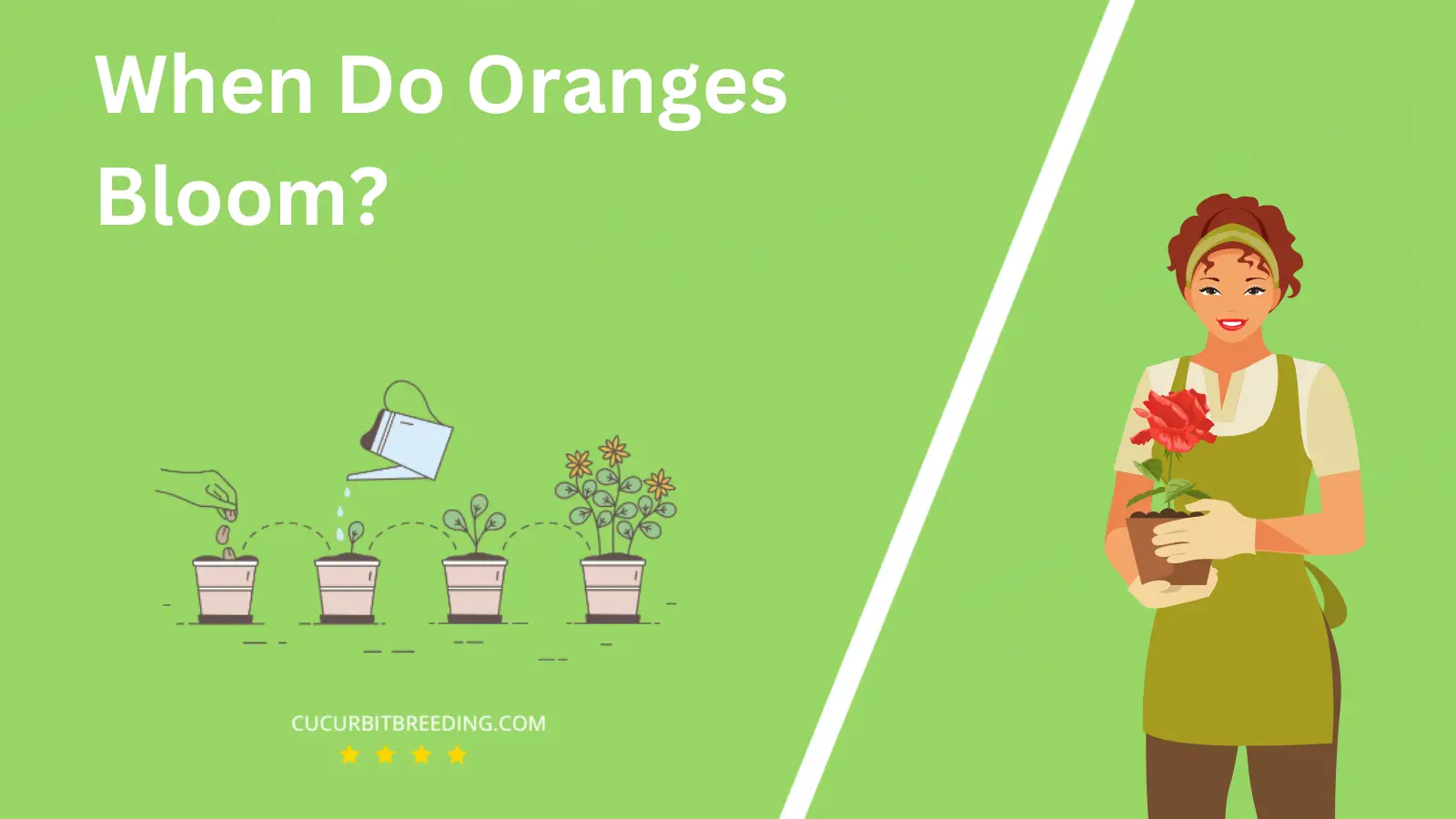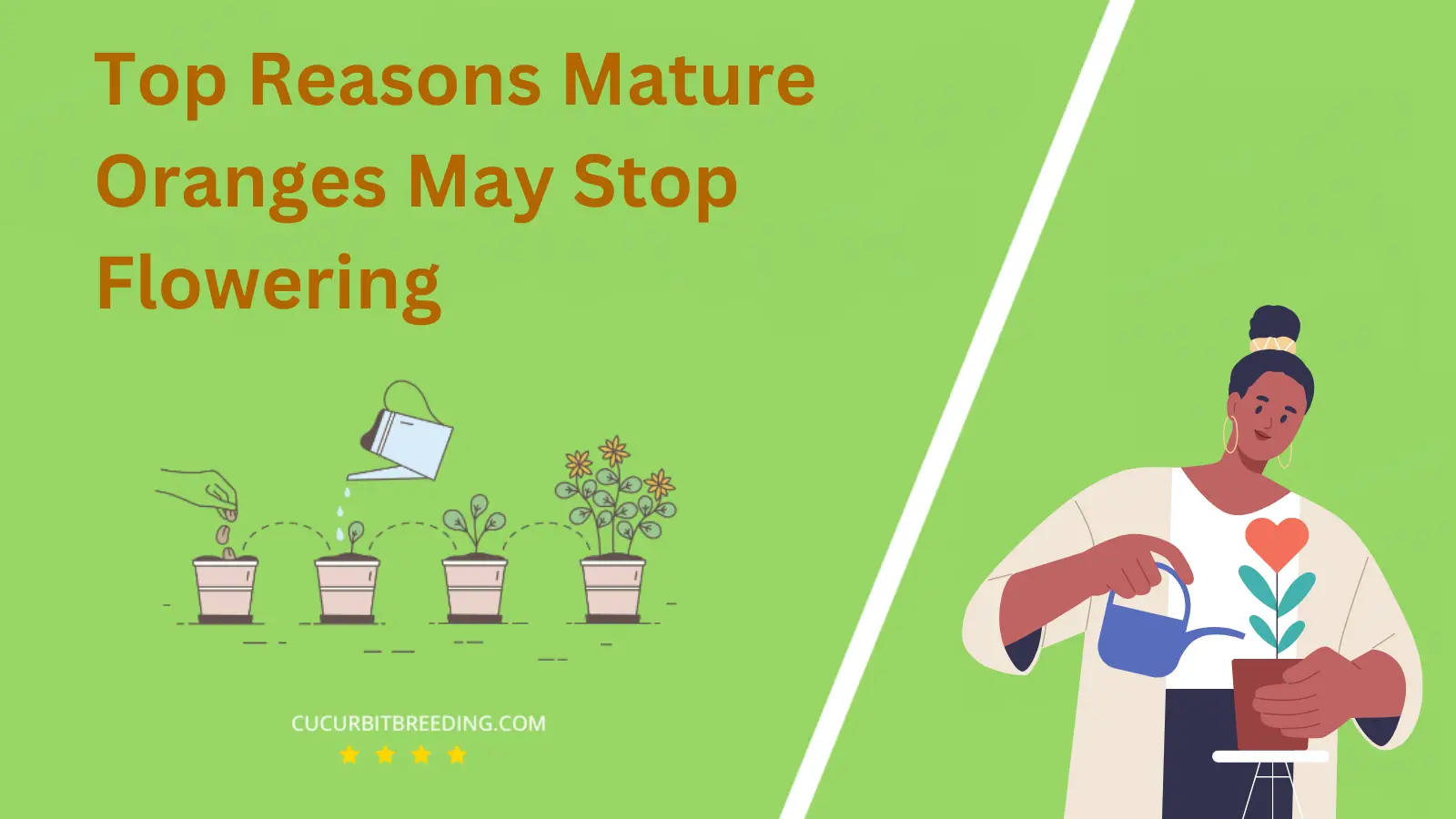
Ever wondered, when do oranges bloom? Well, you’re in for a treat as we delve into the delightful journey of an orange’s life cycle. This citrus fruit’s blooming season is a fascinating spectacle that nature offers.
But, it is not just about aesthetics, understanding this process is essential for farmers and gardeners alike. So, let’s unearth the secrets of orange trees’ blossoming period.
When Do Oranges Bloom?
Oranges typically bloom in the spring season, which often falls between the months of March and June. However, the exact timing can vary depending on the specific variety of the orange tree and the climate of the region where it is grown. It’s important to note that a healthy, mature orange tree can produce flowers multiple times a year, although the spring bloom usually results in the most fruit.
| Stage | Description |
|---|---|
| Germination | Spring (March-April) |
| Growth | Spring and Summer (March to August) |
| Blooming | (February to April) |
| Dormancy | Winter (December, January, February) |
How Long Do Oranges Bloom?
Oranges typically bloom in the spring season, specifically between March and June. However, the exact timing may vary depending on the specific variety of the orange tree and its geographical location. The blooming period lasts for about one to two months.
How Light Affects Oranges Blooms?
Light plays a crucial role in the blooming of orange trees. These plants thrive in full sun and need at least 6 hours of sunlight each day for optimal growth. The adequate amount of light stimulates the synthesis of carbohydrates, which is essential for the energy required in the flowering process.
Without sufficient light, orange trees’ blossoms may be sparse or not form at all. However, too much direct sunlight can also be harmful, causing sunscorch or overheating. Therefore, the balance of light exposure is critical for the healthy blooming of oranges.
Will Oranges Bloom the First Year You Plant Them?
No, oranges will not bloom in the first year you plant them. Typically, it takes an orange tree about three to six years to start producing flowers and consequently fruits. This period can be influenced by factors such as the variety of the orange tree, the quality of care and environmental conditions.
Will Oranges Bloom Every Year?
Yes, oranges do bloom every year. They are perennial plants, which means they bloom and produce fruit every year. The blossoming usually happens in the spring, and the fruit ripens in the winter. However, it’s worth noting that the health, productivity, and blooming of an orange tree can be influenced by a variety of factors such as its variety, age, location, and care.

Should I Deadhead Oranges Blooms?
Yes, you should deadhead orange blooms. Deadheading, or removing spent flowers, can benefit orange trees by preventing the plant from wasting energy on producing seeds. Instead, this energy can be directed towards growth and the production of new blooms. However, it’s important to deadhead correctly to avoid causing damage to the tree.
Top Reasons Mature Oranges May Stop Flowering

Mature orange trees may stop flowering due to a variety of reasons. Insufficient light is one of the primary reasons, as orange trees require ample sunlight to produce flowers. Similarly, inadequate water or overwatering can also inhibit flowering, as citrus trees require a balance of moisture to thrive.
Lack of nutrients is another common cause. Oranges need a variety of nutrients, including nitrogen, phosphorus, and potassium, to produce flowers. If these are lacking in the soil, flowering may be affected. Additionally, temperature extremes can also cause a halt in flowering. Mature orange trees are sensitive to freezing temperatures and extreme heat, which can stress the tree and hamper flower production.
Lastly, disease and pests can also affect flowering. If a tree is battling insects or disease, its energy is diverted away from flower production to defense mechanisms. Regular inspection and treatment can help maintain the health of the tree and promote flowering.